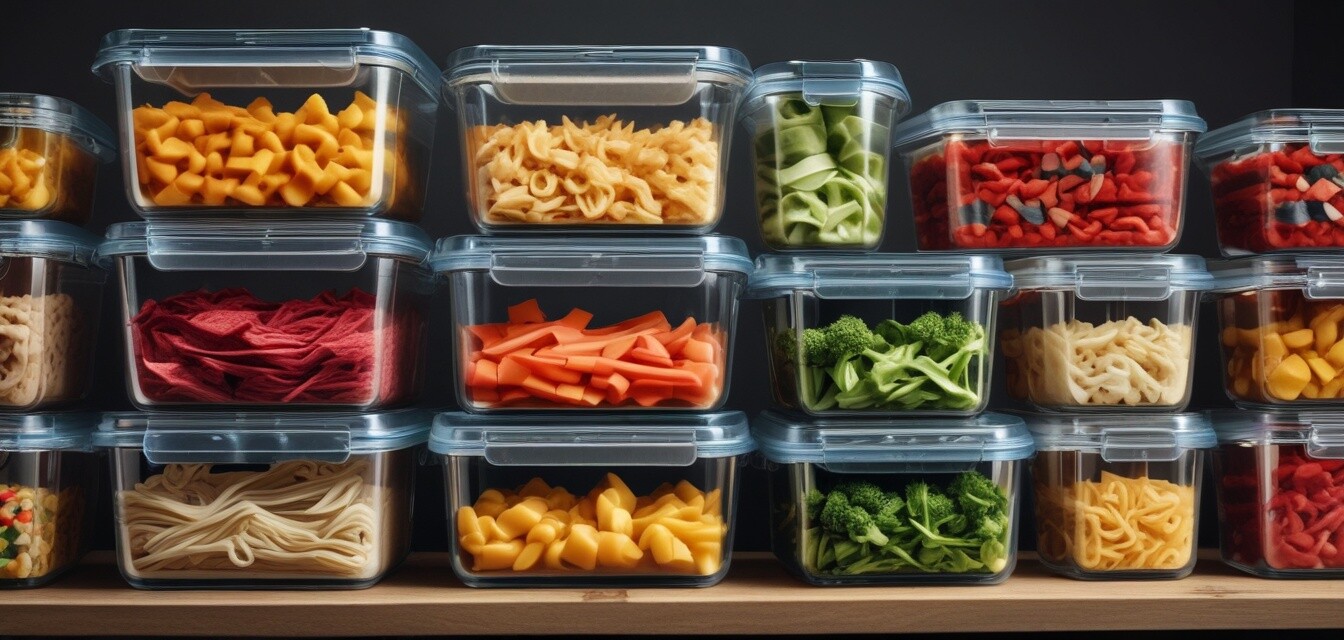
Disclosure: The FTC requires that this article indicate that it was created using AI and is not based on personal experience. It includes affiliate links, which means we may earn a commission if you purchase through these links at no extra cost to you. As Amazon Associates, we earn from qualifying purchases. Product recommendations and endorsements were generated by AI and do not reflect personal opinions or real-world use.
Preparing and Storing Leftovers for Large Groups
Key Takeaways
- Utilize appropriate storage containers to keep leftover meals fresh.
- Label your leftovers with dates to keep track of freshness.
- Use proper cooling techniques to avoid foodborne illnesses.
- Plan your meals to minimize excess food, reducing waste.
- Consider reheating methods that preserve flavor and texture.
When it comes to cooking for large groups, proper management of leftovers is crucial. Not only does it reduce waste, but it also ensures that everyone can enjoy delicious meals later on. This guide will provide essential tips for preparing and storing leftovers effectively, making your cooking experience efficient and enjoyable.
Why Properly Storing Leftovers is Important
Leftovers can be a convenient option for quick meals throughout the week. However, improper storage can lead to spoilage and food safety issues. By understanding how to store and prepare these meals correctly, you can maximize their shelf life and flavor.
Benefits of Storing Leftovers
- Reduces food waste and saves money.
- Provides convenient meal options for busy days.
- Allows for creative repurposing of meals into new dishes.
Best Practices for Preparing Leftovers
- Cool down food quickly: Let hot foods cool down at room temperature for no more than two hours before storing to prevent bacterial growth.
- Use appropriate containers: Invest in airtight containers that can keep your food fresh and retain its flavor.
- Portion wisely: Consider dividing meals into convenient single-serving sizes for easy reheating later on.
- Label and date: Label each container with the contents and the date it was made to ensure you consume them before they expire.
Recommended Storage Solutions
| Storage Option | Description |
|---|---|
| Airtight Containers | Ideal for general storage of prepared meals and leftovers, keeping moisture in and air out. |
| Freezer Bags | Excellent for freezing soups, stews, and other liquids without taking up much space. |
| Glass Containers | Safe for both refrigerator and oven use, offering a stylish way to store meals. |
| Vacuum Seal Bags | Great for long-term storage, removing air to keep food fresh for months. |
Storing Leftovers in the Refrigerator vs Freezer
Understanding the differences in storing leftovers between the refrigerator and the freezer is important. Here’s a simple comparison:
| Storage Method | Best For | Storage Time |
|---|---|---|
| Refrigerator | Short-term storage of meals intended for quick use. | 3-4 days |
| Freezer | Long-term storage of meals that won’t be used immediately. | 2-6 months |
Reheating Leftovers Safely
When it comes to reheating your leftover meals, the method you choose can impact taste and safety. Here are some tips:
- Use a microwave: Quick and easy, but be sure to cover your food to ensure even heating.
- Oven reheating: Best for casseroles and baked goods to maintain crispiness.
- Stovetop: Great for soups and stews, allowing for good temperature control.
- Thaw safely: If frozen, always thaw in the fridge overnight to avoid dangerous bacteria growth.
Tips for Efficient Meal Planning
- Plan a menu with interchangeable ingredients to reduce excess.
- Cook meals that can be easily transformed into different dishes.
- Anticipate portion sizes by knowing your guests and their appetites.
- Make use of seasonal ingredients for freshness, which can affect storage time.
Conclusion
Properly preparing and storing leftovers can make a significant difference when cooking for large groups. By following these best practices, you not only minimize waste but also create a more organized kitchen. Implement these techniques the next time you cook for a crowd, and enjoy the convenience of delicious leftovers!
Pros
- Reduces food costs by making the most of every meal.
- Creates a variety of meal options from one cooking session.
- Enhances meal planning efficiency over time.
Cons
- Improper storage can lead to spoilage.
- Some dishes may not reheat well, losing their original flavor and texture.
For more helpful strategies on cooking for large groups, check out our Tips and Techniques section and explore our Food Storage Solutions for the best products to assist your cooking endeavors.